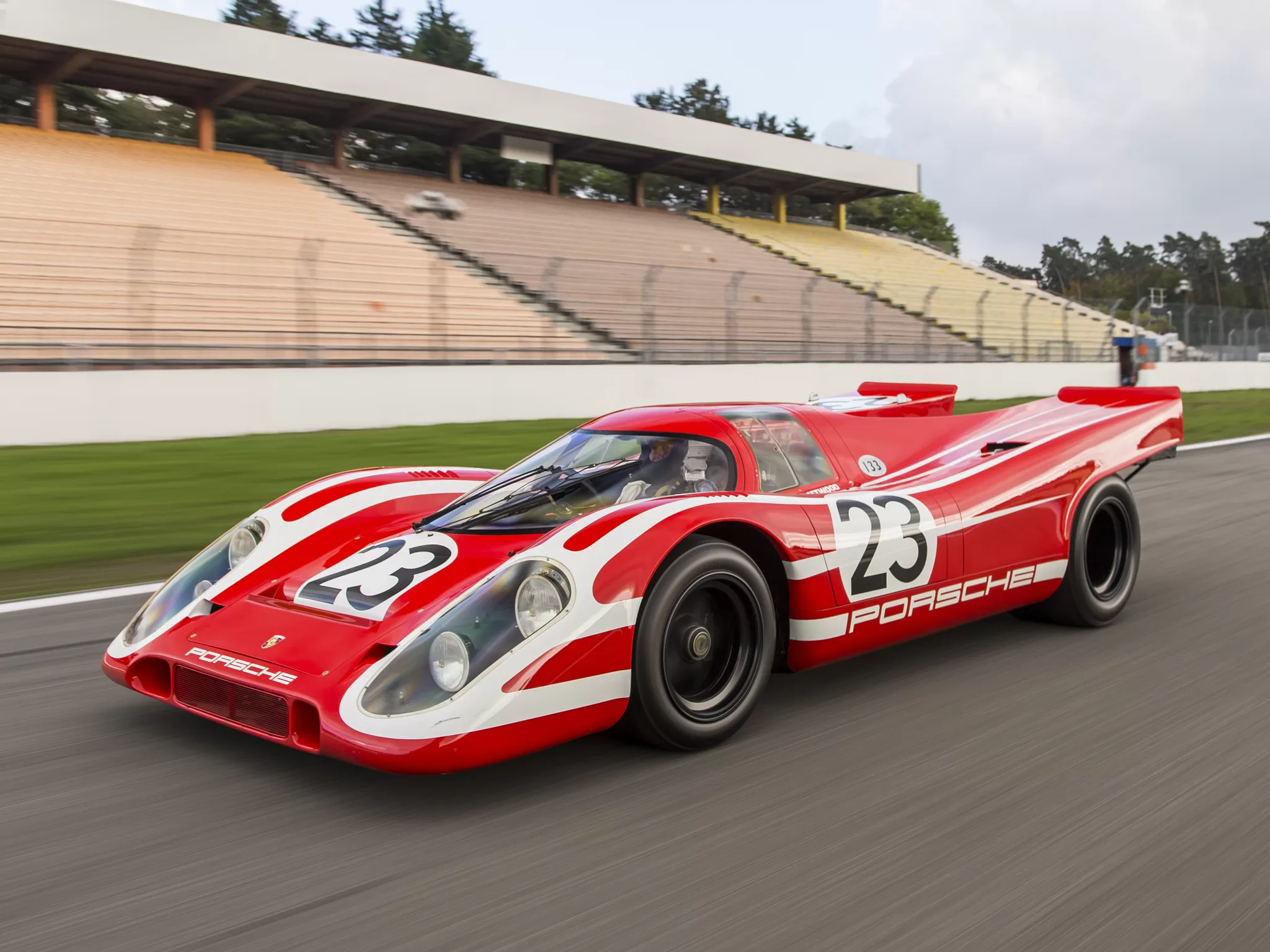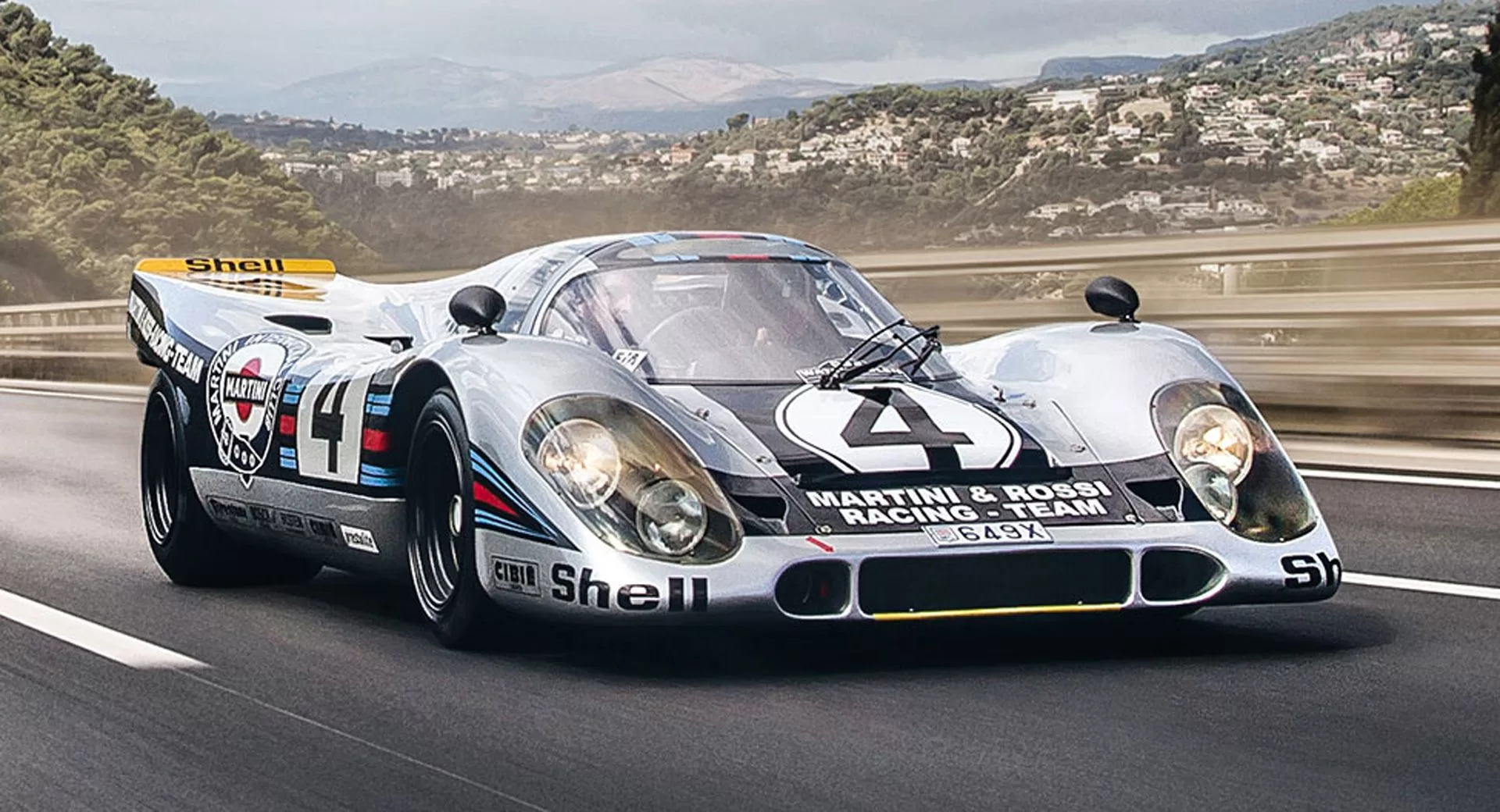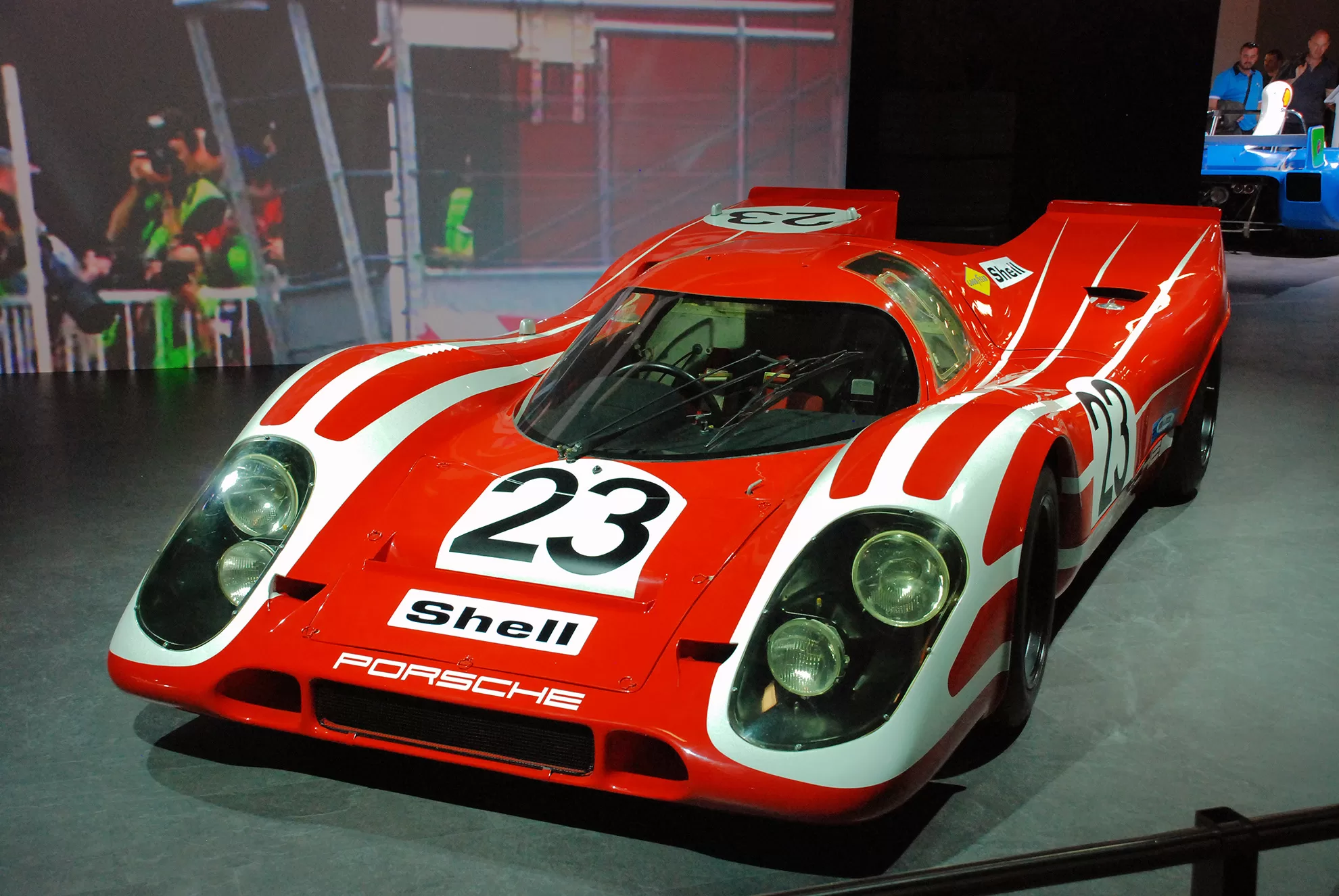Take a walk through the Le Mans museum in France and one ferocious machine visually leaps from the walls – the infamous Porsche 917. With bulging fenders concealing massive racing slicks and giant hip-mounted wings bookending its silhouette, this German prototype icon remains among motorsport’s most recognizable racers decades later for good reason. Its combination of extreme firepower cloaked in slippery aerodynamics utterly dominated endurance racing in the late 1960s through sheer pace and reliability that rivals simply couldn’t match. 
During its 1970-1971 competition peak, the 917 amassed significant race wins while claiming Porsche’s first elusive Le Mans 24 Hour overall victory – cementing the model’s reputation as one of motorsport’s most effective weapons ever developed. This article pays tribute by looking back at the technology, racing heroics and lasting mystique still swirling around the legendary Porsche 917 half a century since its triumphant debut. 
Flat-12 Symphony: The Heart of the Porsche 917 Beast
Mounted amidships behind the driver sat this Le Mans conqueror’s sonorous 12-cylinder boxer powerplant producing a maniacal sound matched only by its sheer output. Displacing either 4.5 or 5.0 liters in competition trim, this ultra-compact flat engine configuration centralized mass low and forward in the chassis for optimal handling using an aluminum alloy block.  Constructed under exacting tolerances normally reserved for prototypes alone, it incorporated twin overhead camshafts, 48 valves, and dry sump lubrication capable of over 600 horsepower output depending on tune. Mated to 5 & 6-speed gearboxes engineered for explosive shifts, the 917 unleashed this voice with overwhelming authority racing down Mulsanne straight at 230+ mph during Le Mans.
Constructed under exacting tolerances normally reserved for prototypes alone, it incorporated twin overhead camshafts, 48 valves, and dry sump lubrication capable of over 600 horsepower output depending on tune. Mated to 5 & 6-speed gearboxes engineered for explosive shifts, the 917 unleashed this voice with overwhelming authority racing down Mulsanne straight at 230+ mph during Le Mans.
Slippery Yet Sturdy: Mastering Stability from Chaos
Generating downforce keeping the 3,000 lb Porsche 917 planted at those incomprehensible velocities required equally radical aerodynamic solutions never attempted previously. Since high-speed accidents frequently decided mechanical endurance races, Porsche tested various configurations to stabilize its low-slung silhouette in wind tunnels along with leveraging computer modeling.
The final aerodynamic recipe incorporated a long rear taper, integrated rear wing, and reinforced fiberglass body optimizing airflow distribution for maximizing high-speed stability. At speed, the 917 generated immense downforce planting its wide racing slick tires through corners with tenacious grip. By pairing a slippery shape concealing robust chassis construction and near-perfect weight distribution, Porsche enlightened raw brute force into a refined instrument of endurance racing destruction.
Unbeaten in the 1971 Season: Claiming Victory at Le Mans
After near misses during 1969 and 1970 attempts, Porsche finally vanquished its elusive first overall win at the 1971 Le Mans 24 hours. The martini-sponsored #22 Salzburg 917K of Helmut Marko and Gijs van Lennep demonstrated Porsche’s persistence prevailing through the ultimate test of speed and durability. Only after 332 laps of flat-out racing on the 8.3-mile circuit did the iconic red and white chassis finally take the checkered flag – mere miles ahead of rival Ferrari after an entire day! This watershed victory sealed Porsche’s racing prowess while the 917’s formulas became endowed into motorsports engineering legend.
From the campaign overall, Porsche 917s proved practically unbeatable securing the World Sportscar Championship and major endurance races at Monza, Spa, Watkins Glen, and Austria. After half a decade of chasing glory, Porsche’s ultimate weapon of speed finally fulfilled its mission in 1971 thanks to unrelenting development since the model’s 1965 genesis.
Porsche 917 Lasting Legacy as a Masterpiece
The Porsche 917’s racing success and breathtaking technology encapsulated endurance racing’s fearsome peak when unfettered cars circled the earth’s fastest tracks largely unrestricted by later regulations. As the tip of this final analog spear before racing entered tighter restrictions in the mid-1970s, the Le Mans great 917 is thus remembered as the ultimate expression of speed unfettered.
Today, the Porsche 917 remains among the most significant racing cars ever engineered – an apogee of bowling ball aerodynamics concealing flat-12 fury that proved practically unbeatable for a magical period in sports car racing history. For engineers and fans alike, this racing masterpiece also quickens pulses reflecting daring ambitions chasing victory without limits that defined Porsche’s racing DNA then – as it fortunately does today.




